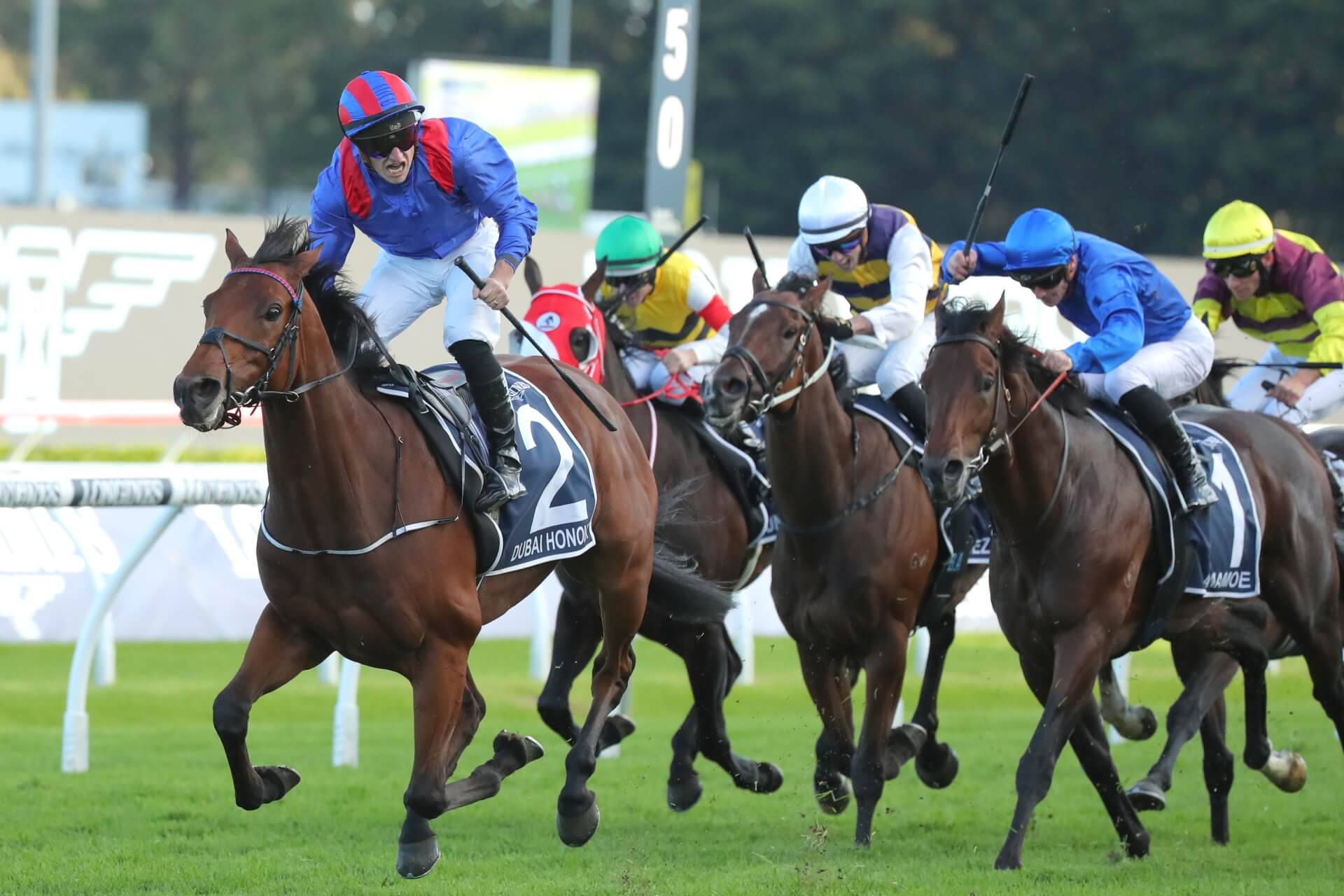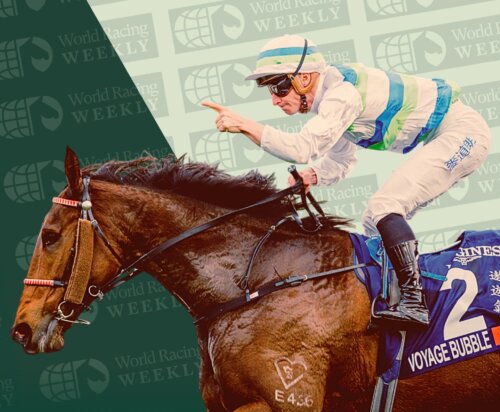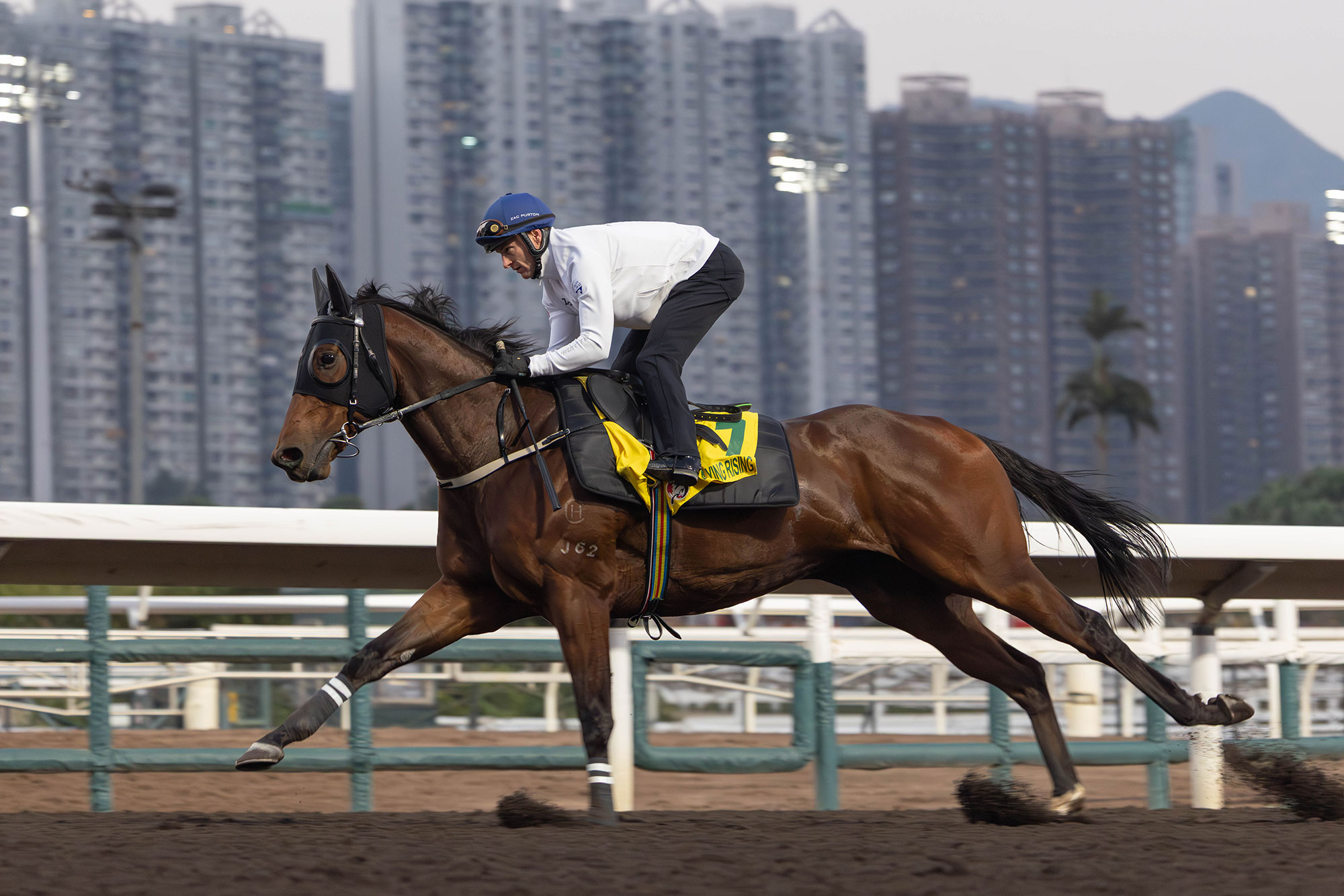When Dubai Honour steps out in Saturday’s G1 Queen Elizabeth Stakes (2000m), he will be seeking to continue not only his own stellar form in Australia, but he will also attempt to enhance the remarkable Sydney statistics of his trainer William Haggas.
Haggas has saddled up 23 starters in Sydney for 11 wins, including six Group 1 victories and Australia’s second-richest race, the A$10 million Golden Eagle. Those 23 starters, between them, banked $14,366,550 – or the equivalent of about £6.8 million – at an average of $624,633 per start.
The Newmarket trainer has found a lucrative seam in Australia, one that puts to shame the pickings on offer in Britain, and he is mining it efficiently. Should Dubai Honour make it four wins from four starts in Australia in the Queen Elizabeth, that prizemoney earned Down Under will leap to A$17,316,550.
By comparison, from 1,404 starters (and 279 winners) in Britain since the start of 2023, he has collected £8,240,758 – about A$17.4 million at an average of $12,394 per start.
That means, if Dubai Honour wins, Haggas will have earned in 24 starts what took him more than 1,400 starts at home. Even though there are starters at all grades in Britain that will skew those figures, he has still won a number of big races with horses like Hamish, Al Aasy, Lake Forest, Economics and Montassib.
Lake Forest has been Haggas’ biggest earner in Australia, even though he only had one start there for a win in the rich Golden Eagle (1500m) at Rosehill.
The Golden Eagle, restricted to southern hemisphere four-year-olds and northern hemisphere three-year-olds, is proving one of the best form references around, highlighted again when Stefi Magnetica, fifth behind Lake Forest, took out the prestigious G1 Doncaster Mile last weekend.
Runner-up Lazzat has had two starts since, both at a mile and both below his best. Trainer Jerome Reynier confirmed to Idol Horse that Lazzat would return to sprinting and to a straight track in the Listed Prix Servanne (1200m) at Chantilly next month. Some of Europe’s best straight sprints may be on his radar should he win, including the G1 Queen Elizabeth II Jubilee Stakes, the G1 July Cup and the G1 Prix Maurice de Gheest, a race he won last year.

In addition to Stefi Magnetica, third Tom Kitten, sixth Port Lockroy, seventh Joliestar and 10th Skybird have since won Group 1 races from 1000m to a mile. Japanese visitor Ascoli Piceno subsequently won the G2 1351 Turf Sprint in Riyadh.
It gives Lake Forest a form boost ahead of his possible seasonal debut in the G1 Champions Mile at Sha Tin on April 27.
For all that The Everest is Sydney’s flashy showpiece, it is the Golden Eagle that has been the best creation of Racing NSW in recent years. While it would be great to see horses of this calibre against their elders in races like the Cox Plate, the sad truth is that many who run in the Golden Eagle would have been retired to the breeding barn or sold to Asia if the race did not exist.
It has also attracted horses to Australia who would never have come otherwise.
Could the timing be better? Sure. Two weeks before the Cox Plate would provide a natural path to Australia’s traditional weight-for-age championship.
However, that would also mean moving The Everest back to allow any four-year-olds to progress to the Golden Eagle and that would defeat one of the key purposes of the revamped Sydney spring carnival in the first place – to disrupt the status quo and to provide an alternative to Melbourne’s peak racing season.
Haggas has already realised just how lucrative Sydney can be. Expect more European trainers to follow suit later in the year to rattle the status quo ∎







